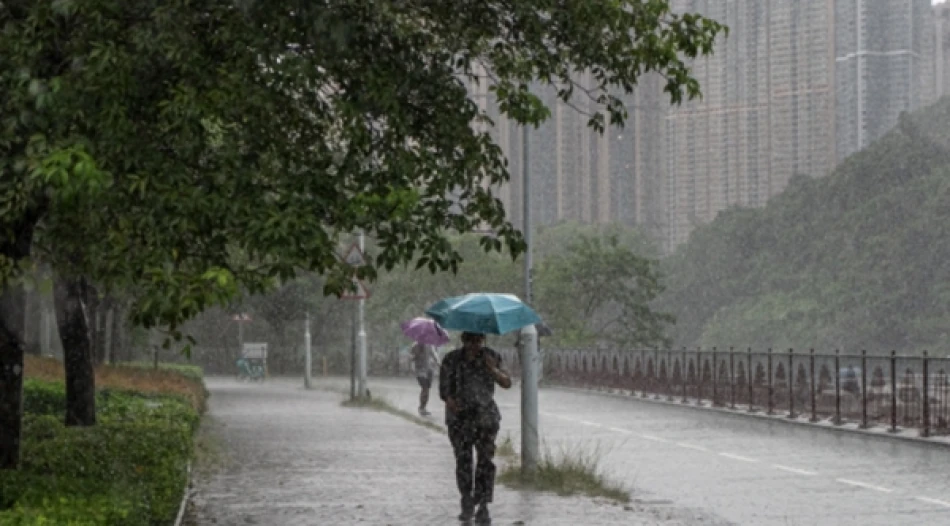
Sudden Floods Inundate Hong Kong: Residents Brace for Extreme Weather Conditions
Hong Kong Faces Historic Deluge as Climate Crisis Intensifies Urban Vulnerability
Hong Kong recorded its heaviest single-day rainfall since meteorological records began in 1884, with over 355mm of precipitation paralyzing the global financial hub and forcing authorities to issue their fourth rainstorm warning in just eight days. The unprecedented weather event underscores the mounting climate pressures facing Asia's densely populated urban centers.
Record-Breaking Rainfall Brings City to Standstill
The torrential downpour on Tuesday transformed Hong Kong's streets into rivers, creating severe flooding and traffic gridlock across the territory. The deluge exceeded the previous August record by a significant margin, highlighting the intensifying weather patterns that climate scientists have long predicted for the region.
More than 9,600 lightning strikes were recorded between 5 AM and noon alone, creating a spectacular but dangerous atmospheric display over the city of 7.5 million residents.
Infrastructure Under Strain
Public Services Disrupted
The extreme weather forced widespread closures across Hong Kong's typically resilient infrastructure. Schools shuttered their doors as a precautionary measure, while hospital services faced significant disruptions, particularly outpatient clinics that serve thousands of residents daily.
Emergency shelters opened across the territory, providing refuge for those displaced by flooding or living in vulnerable housing conditions—a reminder of Hong Kong's stark wealth inequality where many residents occupy subdivided flats in flood-prone areas.
Economic Implications for Asia's Financial Hub
For a city that positions itself as Asia's premier financial center, such infrastructure paralysis carries significant economic costs. Hong Kong's reputation depends heavily on its reliability and connectivity, factors that extreme weather events increasingly threaten.
The frequency of severe weather warnings—four in just over a week—suggests this may become the new normal rather than an exceptional occurrence, potentially forcing costly adaptations across the territory's aging infrastructure.
Regional Climate Pattern Emerges
Hong Kong's extreme rainfall mirrors a broader pattern affecting East and Southeast Asia this summer. From Seoul's record-breaking floods to Beijing's heaviest rainfall in 140 years, the region is experiencing what meteorologists describe as an intensification of the summer monsoon system.
This trend places Hong Kong alongside other major Asian financial centers like Singapore and Tokyo in confronting the reality that climate adaptation is no longer optional but essential for maintaining economic competitiveness.
Long-term Challenges for Urban Planning
The 140-year rainfall record broken on Tuesday represents more than a statistical milestone—it signals that Hong Kong's urban planning assumptions, built on historical weather patterns, may no longer be adequate. The territory's dense development and limited drainage capacity make it particularly vulnerable to the kind of extreme precipitation events that are becoming more frequent.
For Hong Kong's government, already grappling with housing shortages and economic pressures, the need for climate-resilient infrastructure represents another significant financial challenge. The alternative—regular paralysis of one of the world's most important financial centers—may prove far more costly.
Most Viewed News

 Layla Al Mansoori
Layla Al Mansoori






